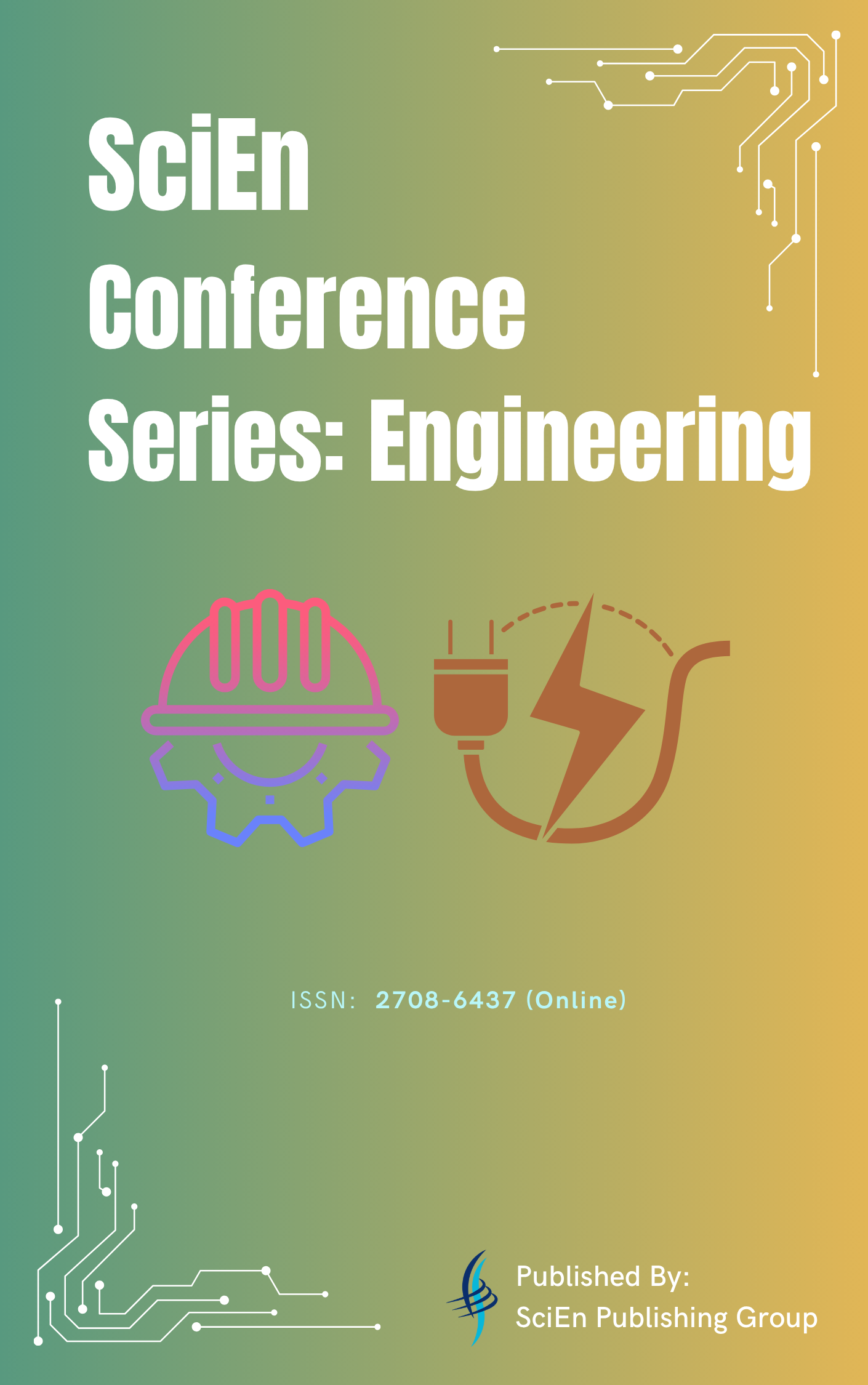Numerical Analysis of Natural Convection Heat Transfer Inside an Inverted T-Shaped Cavity Filled with Nanofluid
DOI:
https://doi.org/10.38032/jea.2021.04.003Keywords:
Natural Convection, Inverted T-Shape, Al2O3 Nanoparticle, CFD, Nusselt NumberAbstract
This assessment is centered on the characteristics of natural convection heat transfer of Aluminium Oxide-Air nanofluid inside an inverted T-shaped enclosure with differentially heated sidewalls. The left edges of the enclosed cavity have been treated as a heated wall and are kept at a constant temperature. The right edges are also maintained at a constant temperature but lower than the heated wall. The top and bottom faces of the cavity have been considered adiabatic. The evaluation has been numerically investigated using ANSYS fluent. The effect of different significant parameters like volume fraction of nanoparticles, the shape of the enclosure, and Rayleigh number on the heat transfer characteristics inside an inverted T shape enclosure have been investigated. In this numerical analysis, a series of DNS simulations have been conducted for different Rayleigh numbers in the range of 103 to 106, the volume fraction of particles in the range 0≤ φ ≤0.1, and for the different aspect ratios for the inverted T shape have been conducted. The outcomes of this CFD analysis indicate a remarkable rise in the average heat transfer coefficient with the rising volume fraction of Al2O3 particles in the air. An increase of the average Nusselt number was also observed with the increase of Rayleigh number, but it drops slightly at a higher volume fraction of nanoparticles due to an increase in conductive heat transfer. For Rayleigh numbers ≥ 104, both the average Nusselt number and average heat transfer coefficient decrease up to a certain shape of the cavity aspect ratio. After that cavity aspect ratio, both the parameters value increase. But in the case of Rayleigh number = 103, both of the values decrease with the increase in the cavity aspect ratio.
References
Choi, S.U. and Eastman, J.A., 1995. Enhancing thermal conductivity of fluids with nanoparticles (No. ANL/MSD/CP-84938; CONF-951135-29). Argonne National Lab., IL (United States).
Maxwell, J.C., 1873. A treatise on electricity and magnetism (Vol. 1). Clarendon press.
Eastman, J.A., Choi, S.U.S., Li, S., Yu, W. and Thompson, L.J., 2001. Anomalously increased effective thermal conductivities of ethylene glycol-based nanofluids containing copper nanoparticles. Applied Physics Letters, 78(6), pp.718-720. DOI: https://doi.org/10.1063/1.1341218
Xie, H., Lee, H., Youn, W. and Choi, M., 2003. Nanofluids containing multiwalled carbon nanotubes and their enhanced thermal conductivities. Journal of Applied Physics, 94(8), pp.4967-4971. DOI: https://doi.org/10.1063/1.1613374
Jana, S., Salehi-Khojin, A. and Zhong, W.H., 2007. Enhancement of fluid thermal conductivity by the addition of single and hybrid nano-additives. Thermochimica Acta, 462(1-2), pp.45-55. DOI: https://doi.org/10.1016/j.tca.2007.06.009
Xuan, Y. and Li, Q., 2000. Heat transfer enhancement of nanofluids. International Journal of Heat and Fluid Flow, 21(1), pp.58-64. DOI: https://doi.org/10.1016/S0142-727X(99)00067-3
Eastman, J.A., Choi, U.S., Li, S., Thompson, L.J. and Lee, S., 1996. Enhanced thermal conductivity through the development of nanofluids. MRS Online Proceedings Library (OPL), 457. DOI: https://doi.org/10.1557/PROC-457-3
Nnanna, A.A., 2007. Experimental model of temperature-driven nanofluid, Journal of Heat Transfer, 129(6), pp. 697–704. DOI: https://doi.org/10.1115/1.2717239
Ali, M., Zeitoun, O., Almotairi, S. and Al-Ansary, H., 2013. The effect of alumina–water nanofluid on natural convection heat transfer inside vertical circular enclosures heated from above. Heat Transfer Engineering, 34(15), pp.1289-1299. DOI: https://doi.org/10.1080/01457632.2013.793115
Ho, C.J., Liu, W.K., Chang, Y.S. and Lin, C.C., 2010. Natural convection heat transfer of alumina-water nanofluid in vertical square enclosures: An experimental study. International Journal of Thermal Sciences, 49(8), pp.1345-1353. DOI: https://doi.org/10.1016/j.ijthermalsci.2010.02.013
Saleh, H., Roslan, R. and Hashim, I., 2011. Natural convection heat transfer in a nanofluid-filled trapezoidal enclosure. International Journal of Heat and Mass Transfer, 54(1-3), pp.194-201. DOI: https://doi.org/10.1016/j.ijheatmasstransfer.2010.09.053
Brinkman, H.C., 1952. The viscosity of concentrated suspensions and solutions. The Journal of Chemical Physics, 20(4), pp.571-571. DOI: https://doi.org/10.1063/1.1700493
Maxwell-Garnett, J.C., 1904. Colours in metal glasses and in metallic films. Phil. Trans. R. Soc. Lond, A, 203, pp.385-420. DOI: https://doi.org/10.1098/rsta.1904.0024
Ghasemi, B. and Aminossadati, S.M., 2009. Natural convection heat transfer in an inclined enclosure filled with a water-CuO nanofluid. Numerical Heat Transfer, Part A: Applications, 55(8), pp.807-823. DOI: https://doi.org/10.1080/10407780902864623
Abouali, O. and Ahmadi, G., 2012. Computer simulations of natural convection of single phase nanofluids in simple enclosures: a critical review. Applied Thermal Engineering, 36, pp.1-13. DOI: https://doi.org/10.1016/j.applthermaleng.2011.11.065
Downloads
Published
Issue
Section
License
Copyright (c) 2021 Gopal Sen, Mohammad Ilias Inam

This work is licensed under a Creative Commons Attribution-NonCommercial 4.0 International License.
All the articles published by this journal are licensed under a Creative Commons Attribution-NonCommercial 4.0 International License

